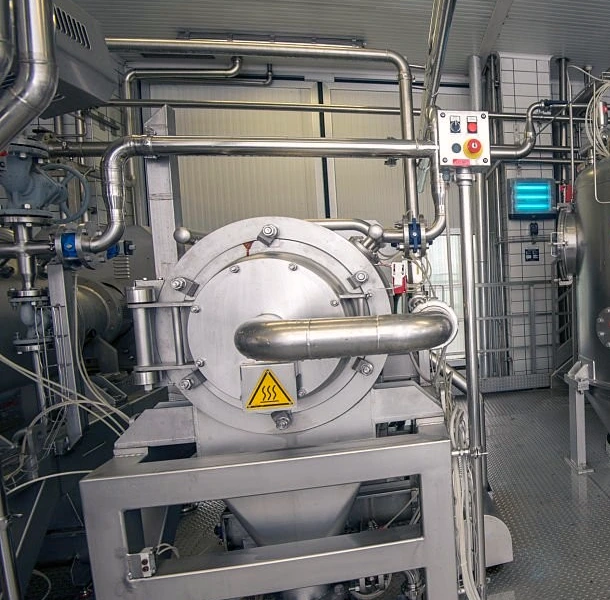Like any other industry, the effluents of sweet manufacturing and, especially, dairy industries can lead to water and soil pollution. This is why you require the best measures to minimize and curb the harmful impact on our environment. This article will discuss this topic more. Most importantly, we will take a close look at how successful and cost-effective dairy wastewater treatment can be done. Without further ado, let us dive straight into the subject.
Why dairy industry effluent treatment matters
In today’s world, milk production helps farmers garner more profit than crop production. This is mainly because milk and subsidiary products like cheese, ghee, and yogurt are largely consumed by a vast population. They are also used extensively in sweet and dairy product manufacturing.
Wastewater generation is one of the most substantial environmental facets that sweet manufacturing and dairy industries need to deal with. This is mainly because of the high volume of products produced and the consequent quantity of pollutants. Most of the water consumed by dairy companies ultimately gets converted into effluents.
This is due to the lack of provisions for proper water inputs for the final consumable products. Therefore, you can see that the quantity of wastewater produced during the manufacturing process is simply the result of the quantity of lost water that gets evaporated while processing.
This is one of the main reasons why you need to go for effectual dairy industry effluent treatment methodologies. By doing so, you can rest assured that there are no major concerns that can arise due to the volume of the generated wastewater.
Effluent treatment methodologies
While thinking of an effective dairy industry effluent treatment plant, you should design it with one major aim in mind. And that is to substantially lessen the pollutant levels in various manufacturing discharge items such as oils, suspended solids, fats, and BOD5.
By going for an effluent treatment plant in the dairy industry, you can excellently rectify the pH level of the effluents. You should also note that the biological treatment technique is important so that you can successfully separate the oils, fats, and suspended solids present in the wastewater.
Various processes involved in dairy wastewater treatment
- Pre wastewater treatment
- Physiochemical wastewater treatment
- Biological wastewater treatment
- Sludge treatment
- Pre wastewater treatment
It is interesting to know that this initial step in dairy wastewater treatment can be either physical or physiochemical, or even both. However, this depends on the nature and concentrations of the pollutants that undergo the biological treatment.
The starting procedure for the wastewater treatment plant should be carried out in a completely foolproof manner. For this, you need to make sure your wastewater treatment unit comes with features for air regulation system homogenization along with oil and grease separation.
- Physicochemical treatment
This is the second main step in dairy wastewater treatment, where you will be able to find a Dissolved Air Flotation, aka DAF system, and a regulation tank. Here is where the pH control process and the segregation of flocculant and coagulant substances are carried out.
This important procedure done by the wastewater treatment plant ensures the total removal of fats and oils from the effluents.
- Biological wastewater treatment
The high quantity of COD loads that are present in wastewater requires an anaerobic biological treatment with a temperature that ranges between 25 to 30 degrees centigrade. This temperature range is vital so that you can minimize the COD percentage by a substantial 70 to 80%, which is great.
Another important benefit of this anaerobic biological technology of dairy wastewater treatment is that there is zero percent energy expended. Moreover, the quantity of biological sludge that is produced will be much more minimal when compared to other aerobic biological procedures.
You can partially use the effluent generated with the tertiary dairy wastewater treatment step for other processes, too, which will assure minimal final effluent discharge.
- Sludge drying of the effluent treatment plant in the dairy industry
The sludge that is separated by the wastewater treatment plant is subsequently sent to the thickener. Following this step, the anaerobic sludge concentration percentage that you will finally get will range approximately from 2 to 3% and 6 to 8%. And you can sell it out as a byproduct that can be utilized by other waste treatment plants.
Apart from that, the thickened sludge from your effluent treatment plant in dairy industry is often further treated using flocculant and lime and further subjected to dehydration. This is done with the help of the filter purpose, and you can either use it for composting or casually discard it in a landfill. You should also remember that by using the vacuum evaporation system, you will obtain a higher concentration, which is ideal for composting requirements and will also much lesser pollutants.
Another major advantage of going with the anaerobic wastewater treatment technology is that you can create biogas that is suitable for a boiler to produce energy. Thus, energy consumption can be reduced in a very substantial way. You also don’t have to worry anymore about the percentage of toxic materials or discarding them safely back to nature.
Conclusion
There is no doubt that the sweet manufacturing and dairy industries account for one of the largest vital sectors of human nutrition. Mostly, the treatment techniques and methodologies used for the treatment of effluents are complex. This is primarily because you can see that there is a higher concentration of nitrogen, COD, fats, suspended solids, and other pollutants. The good news is that with sustainable practices, many food industries, especially dairy companies, are now switching to anaerobic biological effluent treatment strategies. What follows is the effective generation of biogas and the assurance of optimal nature conservation. All thanks to the anaerobic biological treatment process that involves effective separation of waste items, ultrafiltration, and finally, the sludge drying procedure fortified with the best evaporation techniques. Are you an aspiring entrepreneur aiming to accomplish big-time in the food industry? Do you aim to follow the finest environment-friendly practices? Then, it is time to contact Northamps, the true pioneers in the waste management plant sector.


